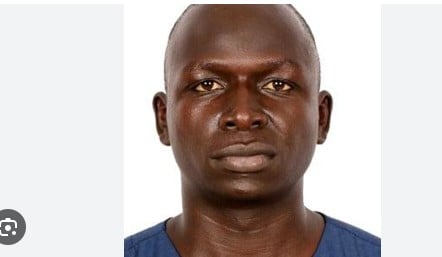Prime
Janet Museveni: Emerging from the shadows

Janet Museveni
What you need to know:
Once seemingly content to remain in her husband’s shadow, the first lady has for the past six years shown a tougher and more ambitious persona as a politician. A complete contrast with her earlier profile, but one she has managed with grace, writes Raymond Mpubani.
Janet Museveni is, at 26 years, Uganda’s longest serving First Lady. And for a long time it seemed that is all she was content to be, content with staying behind the scenes to support her tireless husband, until she decided to join his profession.
In November 2005, she announced that she would stand for the Ruhaama County (Ntungamo District) Parliamentary seat against FDC’s Augustine Ruzindana in the February 2006 general elections. It was an intriguing decision: was the move prompted by the need to remove one of her husband’s most principled critics, a man who had served in Museveni’s government as IGG before he broke rank and joined the opposition? Ruhaama is after all not where she originates from – she was born in Kajara County, Ntungamo, 64 years ago. Or was it a gambit, an opening sequence to something bigger?
Janet Museveni, it had been said all along, was not comfortable with politics. The President said as much when she announced her decision to stand in Ruhaama, but said he could not stand in the way of her conviction that her people, and the country at large, needed her. She had stood on the sides all this time and nothing much had changed. It was now time for her to get in the thick of things.
She was born Janet Kainembabazi Kataaha in the arcadian village of Bwongyera, descended from a line of Ankole chiefs. At six she lost her father, Edward Kataaha, who was a sub-county chief in Kajara in the colonial administration.
She went to Kyamate Primary School, before moving on to Bweranyangi Girls Secondary School. In 1965, she enrolled for a nursing course at Makerere University. A year later she became a ground hostess with the East African Airways.
Meeting Museveni
After the death of her father she lived with her cousin, John Wycliffe Kazzora, and it’s because of him that she later came to meet Museveni. While Museveni had moved to Tanzania after Idi Amin overthrew Obote’s government, John Kazzora, with Janet in tow, fled to Nairobi when, after Amin murdered former Chief Justice Benedicto Kiwanuka, suspected state security operatives raided Kazzora’s Kampala offices and killed a colleague. In Nairobi Kazzora decided to work with the rebels and in the process met Yoweri Museveni.
Kazzora was forced out of Nairobi by the Kenyan government after Amin raised complaint, and he moved to England. President Museveni writes in Sowing the Mustard Seed (page 87): “Kazzora had thus already left by the time I returned to Nairobi in Jan. 1973, but he nominated Janet to work as a liaison and courier between himself and me.” They married in August of that year, 1973.
Their first child, Muhoozi Kainerugaba, was born a year later in August 1974. As her husband led a fugitive life, fighting regime after regime, Janet looked after their young family –the couple have four children with the youngest, Diana Museveni, born in 1980, a year before Museveni launched the 1981 bush war. In 1979 she returned to Kampala from England only to leave in 1981 for Nairobi and later for Sweden in 1986. She returned to Uganda as First Lady in May 1986.
The fight against HIV/Aids
Once in Kampala, she joined what is probably one of her husband’s greatest achievements, the early fight against HIV/Aids – during the 1990’s HIV/Aids prevalence rates fell from 15 per cent to around 6 per cent, a success unique in sub-Saharan Africa – by forming the privately-held NGO, Uganda Women’s Efforts to Save Orphans (UWESO).
Ms Museveni rallied women’s groups across the country to help the big number of children –estimated at over 1.5m – orphaned by the AIDS scourge and the bush war. UWESO worked with some of the families that had taken in the children, initially providing relief items.
It soon added income-generating activities to help the families survive. In My Life’s Journey, her autobiography, she says that: “My aim was always to bridge the gap in the social development sector and touch on areas that were not covered by government, especially the vulnerable elements of society – in particular women and children.” Apart from mending the social structure in the many villages it operated, the organisation, which currently operates in over 40 districts, was also responsible for propping up the incomes of the thousands of families that took on the orphans.
That, coupled with other soft, genteel duties, like organising holiday seminars for teenagers in Kampala (with another NGO she founded, Uganda Youth Forum) was her cause in the 1990’s. She also became a fashion icon, inexplicitly of course, with her low-cut ‘Janet’ hairstyle.
Unleashing the tough Janet
The turn of the century however, demanded a change in style, new roles. There was that incident in 2003 when her family came under heavy criticism for their decision to fly Natasha Museveni, the couple’s first daughter, in the presidential jet to a Germany hospital to have a baby, at a cost of $90,000 (about Shs225m). And then a critical appraisal of her husband by a former American envoy in 2005. On both occasions she came out strongly to defend the family, bringing to the fore a toughness that was not known before.
It was a requisite toughness, we soon found out, given her next career choice. It is said that the President went to great lengths to dissuade her from standing, even calling in senior NRM officials to help plead his case, all in vain. It was a divine calling: “God has sent me to do this and when God sends me I must obey,” she said in a press interview.
Janet Museveni defeated Mr Ruzindana in 2006 and again in 2011. One of the first things she did in Parliament was to raise a motion that the country adopts a national prayer day, a proposal that was quickly accepted. In February 2009 she was appointed State Minister for Karamoja affairs, and elevated to full minister in 2011 in the same portfolio. It is a complete contrast to her earlier profile, but it is one she has managed with grace.
In many ways she is fulfilling what she set out to do and even more. She is serving her country in a more active role and, at a tricky time for her husband, is a cabinet face he can trust. Still, for someone who in recent times has proven capable of pulling the occasional surprise, it would be foolish to assume that is all she is content with.
Fact file:
• Diploma in Early Childhood Education, Montessori College Dublin (1990-1993).
• BA. (Hons) Education, Makerere University (1995-1998).
• Founder and patron of Uganda Youth Forum (UYF) an NGO for youth (1995 to date).
• Founder and patron of National Strategy for the Advancement of Rural Women (NSWARU) (1991 to date).
• Founder and patron of Uganda Women’s Efforts to Save Orphans (UWESO) (1986 to date) an indigenous NGO setup to care for war and HIV/AIDS orphans.
• Elected MP for Ruhaama County, Ntungamo District, in February 2006. Re-elected to another five-year term in March 2011.
• Appointed Minister of State for Karamoja Affairs on 16 February 2009. Elevated to Minister for Karamoja Affairs on 27 May 2011.
• Author of My Life’s Journey, her autobiography (Published July 2011).




